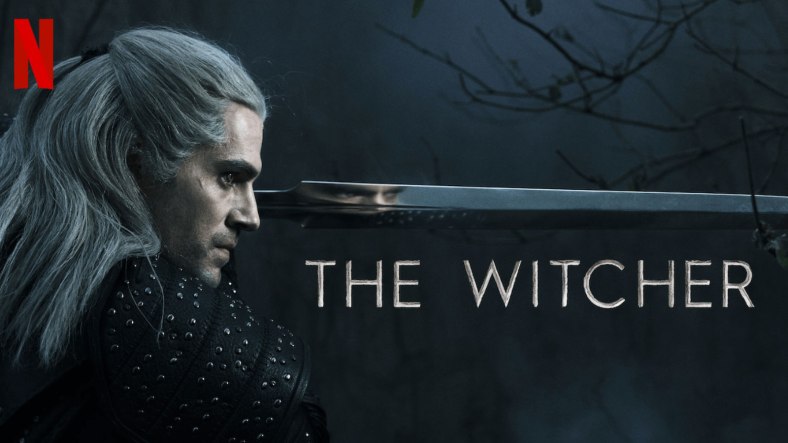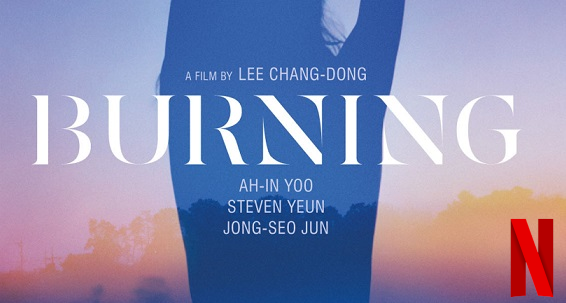By Casey Campbell
I forgot how exciting TV shows can be. I’ve been watching either movies, or shows with no through-line or serialization. I forgot how refreshing it can be to watch something without the standard film structure. While The Witcher may not be perfectly paced, the episodes all manage to blend storytelling in really interesting and surprisingly complex ways. One of the episodes I watched even managed to have me openly questioning what I was watching and where it all fell into place in the series, until an out-of-sync timeline revealed itself. The pacing falters where certain scenes overstay their welcome, or seem to have little to do with the plot at large. Overall, though, the series manages to be a fun, exciting action fantasy series with a high budget and clear care for the material in front of and behind the camera. It’s a Netflix original series.
The Witcher is a fantastical monster hunting and magic wielding warrior out for coin and blood. He’s good at one thing, and he regularly employs his skills. The world of The Witcher is one of harsh high fantasy. Heads roll and blood spills in this gritty medieval world of magic and war. It’s one of those shows that point a finger at humanity for being the real monsters, only this one is well made and a fun watch.
Background: I haven’t really played the games, which is fine for this series as it has nothing to do with the games; I also haven’t read the books, which the series is directly based on. So, I was mostly in the dark to who Geralt of Rivia was, or why he would go on to grunt so often. But now I really really enjoy his character. I can chalk that up to a few things, I think. Henry Cavill’s performance as the lead is so contagiously fun. He’s clearly having the time of his life, and he has the utmost respect for the role. Also, Geralt seems to be the perfect cipher through which a story set in this world can be told. Geralt is a grey middle of morality. He understands that the monsters he kills are sometimes simply violent thanks to hunger or territoriality, or whatever, yet if a sentient creature is deemed a threat he seems to ask questions first, and strike only if needed. It’s because he’s as much an outsider as the “monsters” he gets paid to fight. He’s still a pariah, except with the added brusqueness of a fantasy mercenary with powers and sweet sword skills. Geralt is just a really cool, refreshingly simple character.
For a fantasy series, The Witcher looks absolutely top notch. Normally, when green screen is prioritized for backgrounds, and the central creatures of your story are computer generated, the movie or show can look a bit antiquated—or God forbid for a fantasy series, cheap. But here, the effects are seamless, and the often-used practical effects are both appreciated and amazingly well rendered and tactile. Fantasy needs to have a great sense of worldbuilding so you can just fall into the story and enjoy all of the crazy things that take you further away from Earth. The Witcher succeeds at delivering a unique fantasy world with great creature effects and thankfully not spoon-fed lore regarding the magic and people of the world. For the most part, it seemed like the exposition was earned and integrated into the plot as well as it could be. There was one eye-roll inducing bit of dialogue that openly mocked a character delivering exposition, but that was once thankfully. And not cute, regrettably.
Imperative to mention are the ample and incredibly skillful action sequences seen throughout the show. A complaint of mine, as an action-junky, is that more of the show isn’t as well paced and exciting as the fights. The dialogue heavy scenes are far from bad, but when held next to the brilliant and awe-inspiring climactic sword-fight seen in the first episode, the slower scenes leave a lot to desire. I was seriously left with my mouth agape during that shit. It was amazing.
Some of the pacing is iffy, but the action and characters are engaging enough to warrant a watch of this action series. It’s nice to get lost in a fantasy world, even if it’s a bit bleak at times. And it’s also nice to see Henry Cavill giving a shit about the character he’s playing, because the dude is a good actor when given the right roles.
You can check it out on Netflix.






